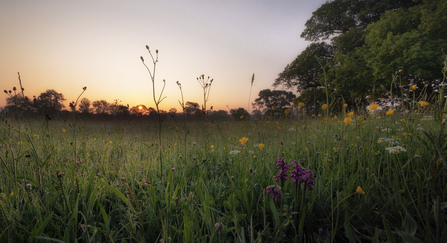All is not lost though – the meadows we still have can provide the means to restore and recreate those that are lost.
This is what Countryfile will be filming at Sweeney Fen Nature Reserve as part of the episode being aired on 22nd August 2021, which you can view here.
Part of the traditional management of meadows is that the grass is cut for hay. Instead of drying the cut grass for winter fodder, we’ll be transferring it fresh to local sites. As the green hay dries, the seed is released and will grow in its new home, providing an enchanting enrichment of the flora.
Meadow management also takes place annually at Lightmoor Nature Reserve in Telford. This years hay was transferred to sites as part of Buglifes BLines project - which will create new habitat networks for insects.


